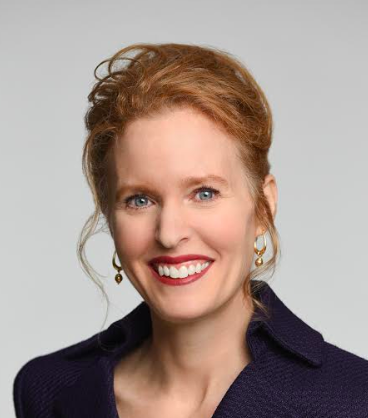
If you’ve read TriplePundit, for much of its 15 years, you have grasped its distinctive word cloud: sustainability, decarbonization, carbon neutrality and, most recently, net zero. More than 700 of the largest global companies apparently have committed to a net zero strategy. That means they aim to negate the greenhouse gases they emit by reducing emissions, absorbing carbon or buying offset credits by some target year.
Climate volatility is here to stay
Fulfilling these net zero ambitions will prove paramount. Because, as the U.S. federal government notes, “Results from a wide range of climate model simulations suggest that our planet's average temperature could be between 2 and 9.7°F (1.1 to 5.4°C) warmer in 2100 than it is today. The main reason for this temperature increase is carbon dioxide and other heat-trapping ‘greenhouse’ gases that human activities produce.”
Of course, we already experience significant physical impacts from climate change. Indeed, the litany of events is old news: “In 2021, the U.S. experienced 20 separate billion-dollar weather and climate disasters, putting 2021 in second place for the most disasters in a calendar year,” behind only 2020’s total of 22 individual billion-dollar extreme weather events, as NOAA summarized earlier this year.
Some losses from these extreme weather events can be avoided or reduced with climate resilience — which explains why I suggest corporate leaders also consider a “net resilience” strategy. We must be creative here since resilience doesn’t have the elegant measure of a metric ton of carbon dioxide equivalent that undergirds the net zero key performance indicator behind those corporate commitments.
What would ‘net resilience’ look like?
Reduced deaths from extreme weather events. In 2021, 688 Americans lost their lives this way, and that’s likely an undercount since many deaths from extreme heat are not “coded” that way on death certificates.
Decreased property losses from river flooding, which is rising as the size and frequency of heavy precipitation increases. “Heavy spring rains across the nation in 2019 caused nearly 20 million acres of farmland to go unplanted. Farmers incurred, collectively, billions of dollars in losses, disrupting rural economies across the country as well as the communities they support.”
Lower property losses from wildfire. Among the long list of mega-fires, California’s 2018 Camp Fire – the world’s most destructive that year – destroyed 1,820 structures. “The total residential personal property losses, including homes, condominiums, and mobile homes, was estimated at $7.44 billion, or 88 percent of the fire’s total losses.”
Diminished losses of reservoir water due to heat and drought. “The Lower Colorado River, which provides water to Las Vegas, Los Angeles, San Diego, Phoenix, and Tucson, already faces a million acre-foot deficit linked to current changes in climate and is in danger of running dry far before the Pacific.”
Reduced property losses from hurricanes. With an above-average hurricane season predicted again this year after other recent above-average years, hurricanes and tropical storms have caused the highest insured losses in the U.S., including nearly $40 billion in 2021.
Lower cases of Lyme disease, an insect-borne disease that is spreading due to climate change. About 35,000 new cases are being reported annually but more than 10 times that many are diagnosed and treated each year and aren’t recorded because of a hiccup in the reporting process.
Reduced number of deaths from extreme heat. Heat is historically the top weather-related killer in the U.S.
The checklist for arriving at net zero
Adopting net resilience will require bold actions. The list is long, yet we all should consider how we can contribute to embracing such initiatives as:
Changing laws and construction practices related to where and how we develop to prevent repetitive property loss.
Moving families from harm’s way and increasing affordable housing options in communities that receive those migrating families so that they gain safety, security and stability even as climate change increases uncertainty and instability.
Installing more sustainable infrastructure to mitigate further minor flooding and extreme heat.
Improving stormwater infrastructure, particularly combined sewer and stormwater systems in America’s older cities.
Increasing mental health services to address the stress and strain of growing losses on communities.
Growing appropriate crops in the appropriate geographies — i.e., those that can handle increasing temperatures and more rain when we don’t need it, less when we do.
Increasing knowledge about the urban heat island effect among medical professionals, first responders, employers and the general public to reduce unnecessary heat deaths.
Installing distributed energy generation systems to back up utility-scale power sources impacted by extreme weather.
Being good water stewards and setting priorities for the best use of water as supplies dwindle.
Achieving ambitious net zero targets and engaging more leaders to make and achieve these commitments since the more greenhouse gases we emit, the more difficult it will be to achieve Net Resilience.
Join me in a net resilience movement to rival net zero: a rivalry where everyone wins by creating safer, more secure and more stable communities.
Image credit: Johannes Plenio via Pexels

Joyce Coffee, LEED AP, is founder and President of Climate Resilience Consulting. She is an accomplished organizational strategist and visionary leader with over 25 years of domestic and international experience in the corporate, government and non-profit sectors implementing resilience and sustainability strategies, management systems, performance measurement, partnerships, benchmarking and reporting.














